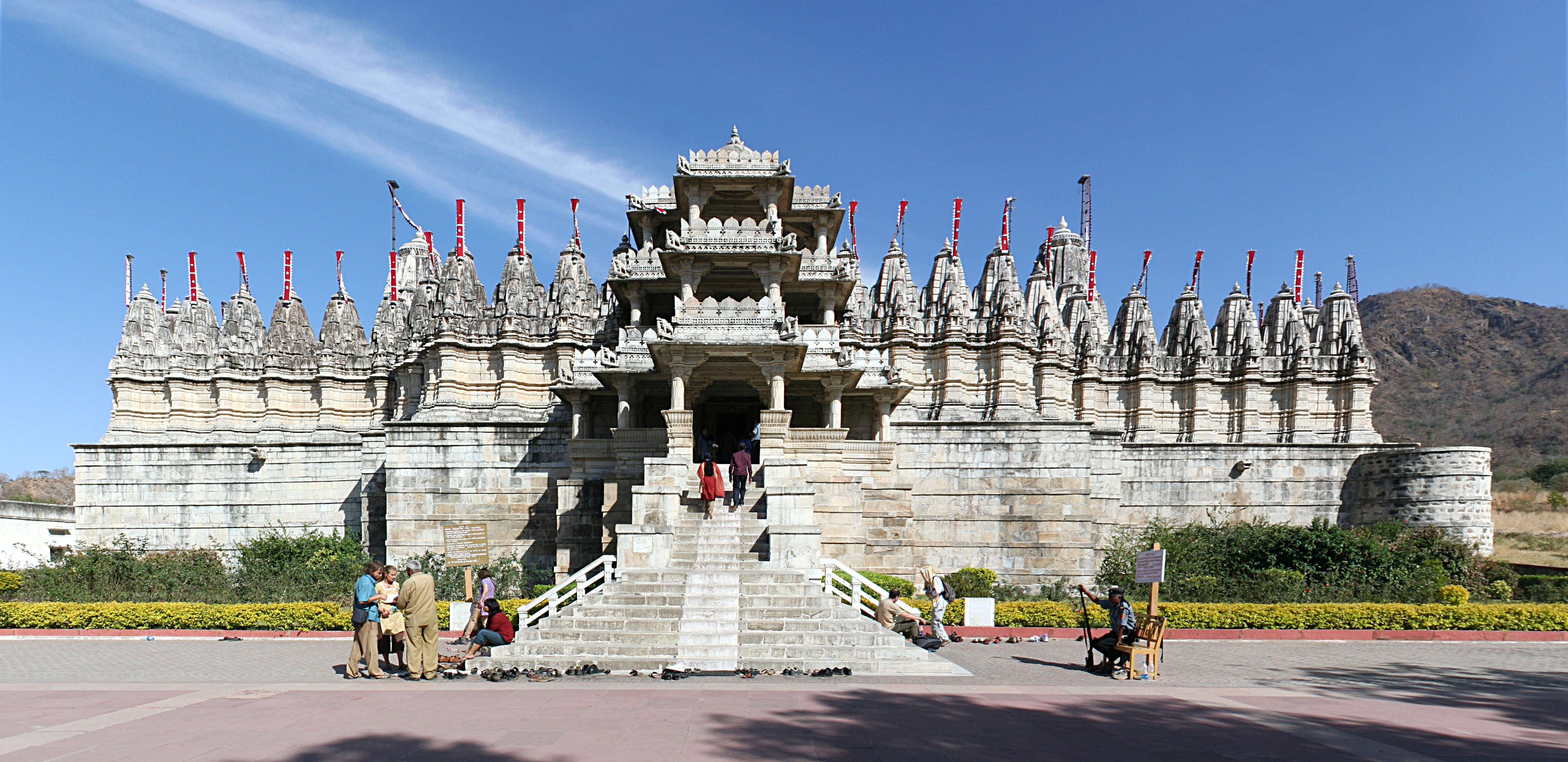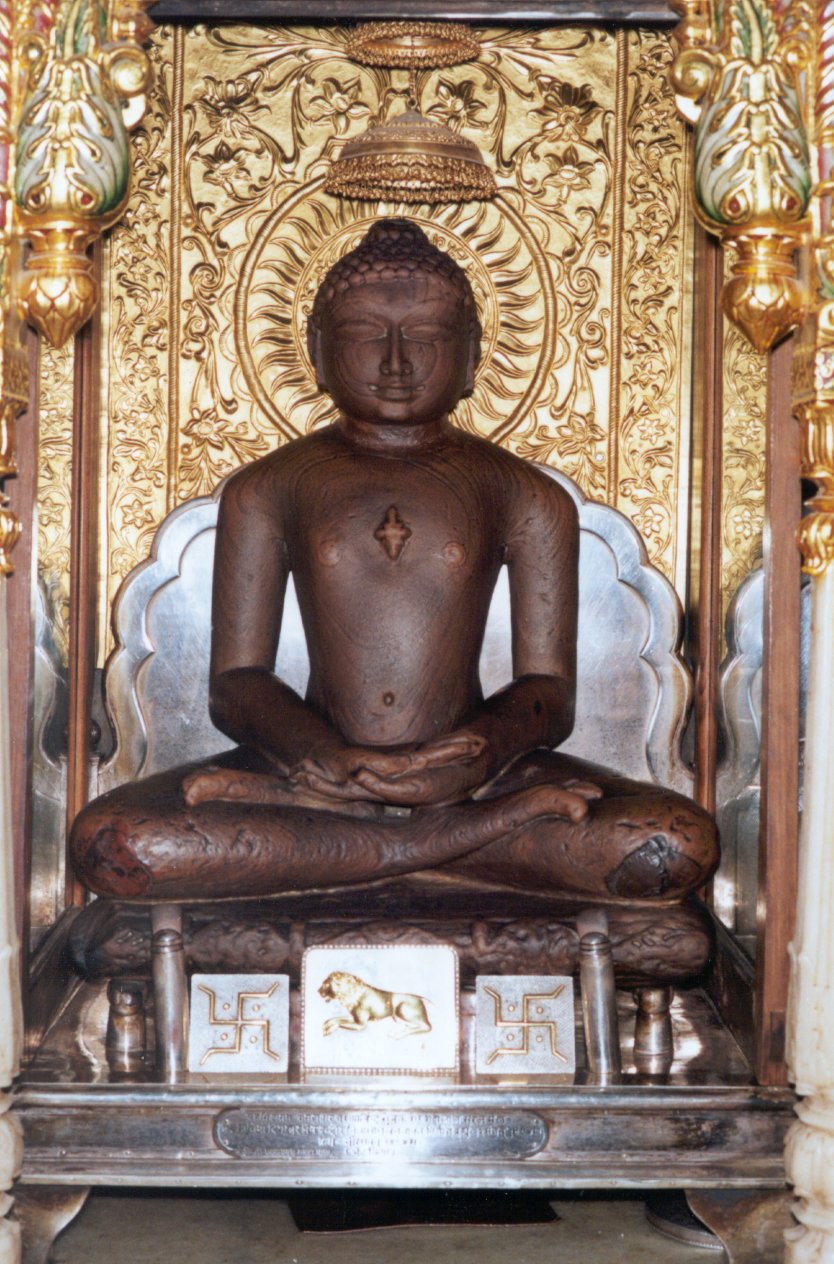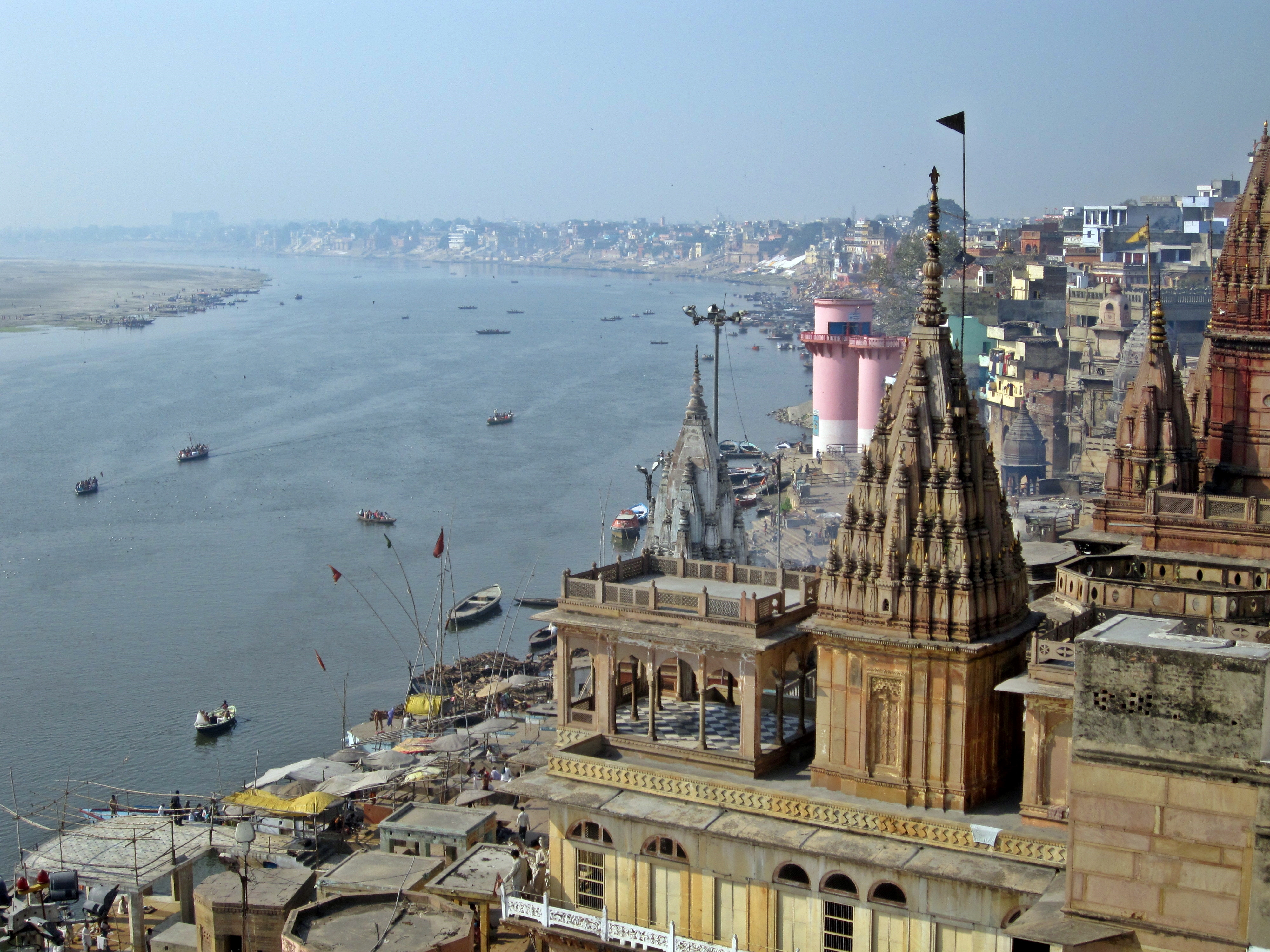|
Tijara Jain Temple
Tijara Jain Temple is a digambar Jain temple dedicated to Chandraprabha. The temple is located in the hill town Tijara, in the Alwar district of Rajasthan, India. It is an ''Atishaya Kshetra'' (English: Place where Miracles happen). It is from Alwar and from Delhi. The location is a '' tirtha'' (pilgrimage site) for the Jains and a tourist attraction. History The temple was established in 1956 following the recovery of an idol of Chandraprabha on 16 August 1956. In 1972, another idol chandraprabhu in the lotus position was discovered. The white stone idol was retrieved from underground, reinforcing the belief that this place was once a ''Dehra'', a place where Jain idols are worshipped. After the setting up of the Jain temple, the place has regained its former importance as a pilgrimage centre. Main temple and idol The mulnayak of the temple is a white marble idol of ''Chandraprabhu'', the eighth ''tirthankara'', in lotus position. According to the inscription, the idol ... [...More Info...] [...Related Items...] OR: [Wikipedia] [Google] [Baidu] |
Jainism
Jainism ( ), also known as Jain Dharma, is an Indian religions, Indian religion. Jainism traces its spiritual ideas and history through the succession of twenty-four tirthankaras (supreme preachers of ''Dharma''), with the first in the current time cycle being Rishabhadeva, whom the tradition holds to have lived millions of years ago, the twenty-third ''tirthankara'' Parshvanatha, whom historians date to the 9th century BCE, and the twenty-fourth ''tirthankara'' Mahāvīra, Mahavira, around 600 BCE. Jainism is considered to be an eternal ''dharma'' with the ''tirthankaras'' guiding every time cycle of the Jain cosmology, cosmology. The three main pillars of Jainism are ''Ahimsa in Jainism, ahiṃsā'' (non-violence), ''anekāntavāda'' (non-absolutism), and ''aparigraha'' (asceticism). Jain monks, after positioning themselves in the sublime state of soul consciousness, take five main vows: ''ahiṃsā'' (non-violence), ''satya'' (truth), ''Achourya, asteya'' (not stealing), ''b ... [...More Info...] [...Related Items...] OR: [Wikipedia] [Google] [Baidu] |
Vikram Samvat
Vikram Samvat (IAST: ''Vikrama Samvat''; abbreviated VS) or Bikram Sambat B.S. and also known as the Vikrami calendar, is a Hindu calendar historically used in the Indian subcontinent. Vikram Samvat is generally 57 years ahead of Gregorian Calendar, except during January to April, when it is ahead by 56 years. Alongside Nepal Sambat, it is one of the two official calendars used in Nepal. In India, it is used in several states. The traditional Vikram Samvat calendar, as used in India, uses lunar months and solar sidereal years. The Nepali Bikram Sambat introduced in 1901 CE, also uses a solar sidereal year. History A number of ancient and medieval inscriptions used the Vikram Samvat. Although it was reportedly named after the legendary king Vikramaditya, the term "Vikrama Samvat" does not appear in the historical record before the 9th century; the same calendar system is found with other names, such as Krita and Malava. In colonial scholarship, the era was believed to be bas ... [...More Info...] [...Related Items...] OR: [Wikipedia] [Google] [Baidu] |
Tourist Attractions In Alwar District
Tourism is travel for pleasure or business; also the theory and practice of touring (other), touring, the business of attracting, accommodating, and entertaining tourists, and the business of operating tour (other), tours. The World Tourism Organization defines tourism more generally, in terms which go "beyond the common perception of tourism as being limited to holiday activity only", as people "travelling to and staying in places outside their usual environment for not more than one consecutive year for leisure and not less than 24 hours, business and other purposes". Tourism can be Domestic tourism, domestic (within the traveller's own country) or International tourism, international, and international tourism has both incoming and outgoing implications on a country's balance of payments. Tourism numbers declined as a result of a strong economic slowdown (the late-2000s recession) between the second half of 2008 and the end of 2009, and in consequence of t ... [...More Info...] [...Related Items...] OR: [Wikipedia] [Google] [Baidu] |
The Times Of India
''The Times of India'', also known by its abbreviation ''TOI'', is an Indian English-language daily newspaper and digital news media owned and managed by The Times Group. It is the third-largest newspaper in India by circulation and largest selling English-language daily in the world. It is the oldest English-language newspaper in India, and the second-oldest Indian newspaper still in circulation, with its first edition published in 1838. It is nicknamed as "The Old Lady of Bori Bunder", and is an Indian " newspaper of record". Near the beginning of the 20th century, Lord Curzon, the Viceroy of India, called ''TOI'' "the leading paper in Asia". In 1991, the BBC ranked ''TOI'' among the world's six best newspapers. It is owned and published by Bennett, Coleman & Co. Ltd. (B.C.C.L.), which is owned by the Sahu Jain family. In the Brand Trust Report India study 2019, ''TOI'' was rated as the most trusted English newspaper in India. Reuters rated ''TOI'' as India's most trus ... [...More Info...] [...Related Items...] OR: [Wikipedia] [Google] [Baidu] |
Rajasthan Tourism Development Corporation
Rajasthan Tourism Development Corporation (RTDC) is an agency of the Government of Rajasthan set up on 1 April 1979 to develop tourism in the Indian state. It manages many restaurants, cafeterias, hotels and bars. The Corporation also organises package tours, fairs, festivals, entertainment, shopping and transport services. In collaboration with Indian Railways it runs the luxury tourist train Palace on Wheels. RTDC has hotels/motels at all major tourist places in Rajasthan Rajasthan (; lit. 'Land of Kings') is a state in northern India. It covers or 10.4 per cent of India's total geographical area. It is the largest Indian state by area and the seventh largest by population. It is on India's northwestern si .... References External links * Tourism in Rajasthan State agencies of Rajasthan State tourism development corporations of India 1979 establishments in Rajasthan Government agencies established in 1979 {{Rajasthan-stub ... [...More Info...] [...Related Items...] OR: [Wikipedia] [Google] [Baidu] |
Jainism In Rajasthan
Rajasthan, a state in western India, has had a close historical connection with Jainism. Southwestern Rajasthan was the main centre for Svetambara Jainism. Major Digambara centres are in the northern and eastern parts of Rajasthan. Central and Northern Rajasthan are the main centres for the Terapanth sect of Svetambara Jainism. Major centres Major ancient Jain centres include: * Soniji Ki Nasiyan (Ajmer Jain Temple) * Khandela * Bhinmal * Osian, Jodhpur; Mahavira Jain temple, Osian * Muchhal Mahavir Temple * Nagaur * Amer (Jaipur) * Sanganer * Kesariyaji Tirth, Rishabhdeo * Shri Mahaveerji temple * Padampura * Lodhurva Jain temple * Nakodaji * Dilwara Temples, Mount Abu * Jirawala * Ranakpur * Bijolia * Nareli Jain Temple * Pindwara * Chittorgarh * Bhandasar Jain Temple * Chand Khedi * Shree Pavapuri Tirth Dham * Jaisalmer Fort Jain temples * Mungathala * Chamatkarji Photo gallery File:Temple de Shanthinath.jpg, Architectural details of Kirti Stambha File:Lodurva_Te ... [...More Info...] [...Related Items...] OR: [Wikipedia] [Google] [Baidu] |
Pinangwan
Pinangwan is a town and eponymous block in Nuh District of Haryana state of India. It lies in the Mewat region of Delhi NCR and Delhi–Mumbai Industrial Corridor. It is located on the MDR131 to Punhana and is also adjacent to the Delhi Mumbai Expressway. History The town was upgraded to the status of a "Development Block" in mid 2017 by the BJP's govt of Manoharlal Khattar.Mewat - Pingawan got the block status but did not appointed here officials till date News18, 15 Dec 2018. Geography Pinangwan is located at 27.90°N, 77.10°E in the |
Shri Mahavirji
Shri Mahavir Ji is an important and prominent Jain pilgrimage site situated in Shri Mahaveerji town in Hindaun Block, Karauli district in Rajasthan. Given the importance of the religious place, the Indian Railways has specifically developed a railway station under West Central Railway zone by the name of Shri Mahaveerji railway station which is 10 minutes drive from the temple and temple authorities have arranged for regular buses from station to the temple. The temple is visited by millions of Jain and Hindu devotees every year. Main temple There are five temples in Shri Mahavirji. Atishaya Kshetra Shri Mahavirji is considered one of the miraculous pilgrimages of Jains. This pilgrimage is situated at banks of Gambhir river in Hindaun Block of Karauli district, Rajasthan. Built at the bank of a river, this pilgrimage is a prominent centre of devotion for Jain devotees. Chandanpur Mahavirji temple is hailed as the heart of pilgrimages. The temple is visited by millions ... [...More Info...] [...Related Items...] OR: [Wikipedia] [Google] [Baidu] |
Lotus Position
Lotus position or Padmasana ( sa, पद्मासन, translit=padmāsana) is a cross-legged sitting meditation pose from ancient India, in which each foot is placed on the opposite thigh. It is an ancient asana in yoga, predating hatha yoga, and is widely used for meditation in Hindu, Tantra, Jain, and Buddhist traditions. Variations include easy pose (Sukhasana), half lotus, bound lotus, and psychic union pose. Advanced variations of several other asanas including yoga headstand have the legs in lotus or half lotus. The pose can be uncomfortable for people not used to sitting on the floor, and attempts to force the legs into position can injure the knees. Shiva, the meditating ascetic God of Hinduism, Gautama Buddha, the founder of Buddhism, and the Tirthankaras in Jainism have been depicted in the lotus position, especially in statues. The pose is emblematic both of Buddhist meditation and of yoga, and as such has found a place in Western culture as a symbol of health ... [...More Info...] [...Related Items...] OR: [Wikipedia] [Google] [Baidu] |
Manasthamba
A manastambha (Sanskrit for 'column of honour') is a pillar that is often constructed in front of Jain temples or large Jain statues. In North India, they are topped by four Tirthankara images. According to the ''Digambara'' Jain texts like ''Adi Purana'' and ''Tiloyapannati'', a huge ''manastambha'' stands in front of the ''samavasarana'' (divine preaching hall) of the tirthankaras, which causes someone entering a ''samavasarana'' to shed their pride. A monolithic manastambha is a standard feature in the Jain temples of Moodabidri. They include a statue of Brahmadeva on the top as a guardian yaksha. Examples Some of the well known Jain manastambhas are: * Kirti Stambha of Chittorgarh. The Vijaya Stambha was inspired by this. * Manastambhas of Devagarh * Manastambhas of Moodabidri * Manastambhas of Shravanabelagola * Manastambha at Shikharji at Madhuvan Manastambhas in South India are generally monolithic. Photo gallery File:Hutessing Temple3 Ahmedabad.JPG, Kirti Stambha of ... [...More Info...] [...Related Items...] OR: [Wikipedia] [Google] [Baidu] |
Parshavanatha
''Parshvanatha'' (), also known as ''Parshva'' () and ''Parasnath'', was the 23rd of 24 ''Tirthankaras'' (supreme preacher of dharma) of Jainism. He is the only Tirthankara who gained the title of ''Kalīkālkalpataru (Kalpavriksha in this "Kali Yuga").'' Parshvanatha is one of the earliest ''Tirthankaras'' who are acknowledged as historical figures. He was the earliest exponent of Karma philosophy in recorded history. The Jain sources place him between the 9th and 8th centuries BCE whereas historians consider that he lived in the 8th or 7th century BCE. Parshvanatha was born 273 years before Mahavira. He was the spiritual successor of 22nd tirthankara Neminatha. He is popularly seen as a propagator and reviver of Jainism. Parshvanatha attained moksha on Mount Sammeda ( Madhuban, Jharkhand) popular as Parasnath hill in the Ganges basin, an important Jain pilgrimage site. His iconography is notable for the serpent hood over his head, and his worship often includes Dharanendra ... [...More Info...] [...Related Items...] OR: [Wikipedia] [Google] [Baidu] |
Real Estate (Regulation And Development) Act, 2016
The Real Estate (Regulation and Development) Act, 2016 is an Act of the Parliament of India which seeks to protect home-buyers as well as help boost investments in the real estate industry. The Act establishes a Real Estate Regulatory Authority (RERA) in each state for regulation of the real estate sector and also acts as an adjudicating body for speedy dispute resolution. The bill was passed by the ''Rajya Sabha'' on 10 March 2016 and by the ''Lok Sabha'' on 15 March 2016. The Act came into force on 1 May 2016 with 61 of 92 sections notified. The remaining provisions came into force on 1 May 2017. The Central and state governments are liable to notify the Rules under the Act within a statutory period of six months. History The Real Estate Regulatory Authority (RERA) Bill was introduced in 2013. In December 2015, the Union Cabinet of India had approved 20 major amendments to the bill based on the recommendations of a Rajya Sabha committee that examined the bill. The Bill had been ... [...More Info...] [...Related Items...] OR: [Wikipedia] [Google] [Baidu] |





